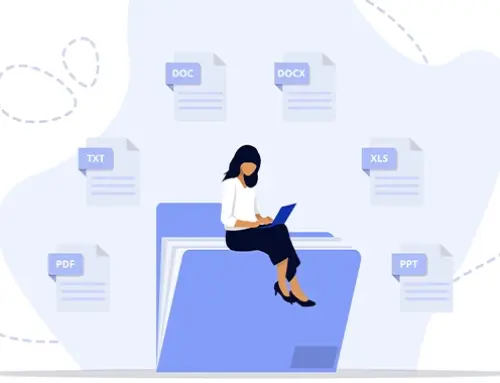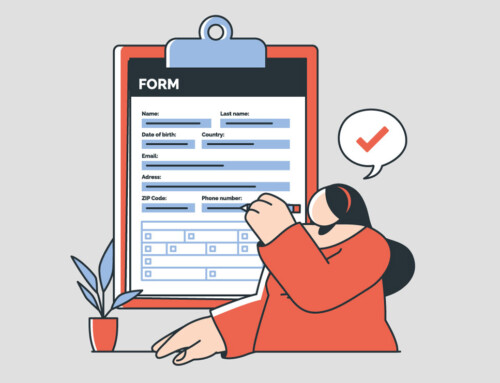Contents
Master Settlement Negotiations with Real Lawyer Examples
Young lawyers frequently encounter challenges in resolving conflicts within time and safeguarding clients’ interests. Negotiation presents a chance of getting favorable outcomes without litigation’s excess cost and delay. In most situations, getting out of court settlement offers more control over the course and terms of the process to both sides. Preparing a well-timed, well-suited offer of settlement could result in settlement at a faster pace and satisfactory clients. This guide gives useful guidance and examples to enable early-career lawyers to navigate the settlement process with ease.
Understanding Settlement Negotiations
I. What Settlement Negotiations Involve
Settlement negotiations are discussions between disputing parties aimed at resolving legal conflicts without proceeding to trial. These discussions typically focus on finding common ground through compromise, with both sides presenting their desired outcomes and acceptable terms. The process may involve direct communication between the parties, or may be facilitated by legal representatives, mediators, or other third parties. Effective negotiation requires a clear understanding of the facts, legal context, and the interests of both parties involved.
II. Why They Matter for New Lawyers
For new lawyers, developing strong negotiation skills is critical to delivering value and managing client expectations. Unlike courtroom litigation, where outcomes are determined by a judge or jury, negotiation allows attorneys to actively shape the result. This provides a unique opportunity to build trust, showcase problem-solving abilities, and gain practical experience in client advocacy. Early exposure to negotiation strategies can help new attorneys reduce unnecessary litigation and reach quicker, more favorable resolutions.
III. Benefits of Out of Court Settlement
An out of court settlement can significantly reduce the financial and emotional toll on clients. Settling outside the courtroom often leads to faster resolutions, lower legal costs, and more predictable outcomes. It also allows clients to avoid the uncertainty of trial and maintain privacy in sensitive matters. Additionally, it may preserve relationships that could be damaged by prolonged adversarial proceedings, such as in business or family disputes. These benefits make non-litigation pathways an attractive option in many legal situations.
IV. Role of a Settlement Offer
A settlement offer serves as the foundation for many legal resolutions outside of court. It is a formal proposal from one party to another outlining the terms under which they are willing to resolve the dispute. The offer typically includes the proposed compensation, actions required by each party, and conditions for compliance. A well-drafted offer demonstrates preparation and good faith, encouraging productive dialogue. New lawyers must understand how to present and evaluate such offers effectively, as they often set the tone for the entire negotiation process.
When to Pursue an Out of Court Settlement
I. Common Legal Scenarios for Settlement
Certain types of legal disputes are more likely to be resolved without litigation. These include personal injury claims, contract disagreements, employment disputes, and family law matters. In such cases, parties often seek a quicker and more cost-effective resolution. Courts may even encourage early resolution through mediation or arbitration to reduce caseloads and preserve judicial resources. When both parties are open to dialogue, early negotiation becomes a practical alternative to a formal trial.
II. Evaluating Litigation vs. Settlement
Lawyers must weigh the advantages and disadvantages of litigation compared to negotiated resolution. Litigation may provide a public ruling and legal precedent, but it often involves extended timelines, significant expense, and unpredictable outcomes. On the other hand, resolving a dispute through structured discussions can offer greater flexibility and confidentiality. New attorneys should assess the strength of their case, the willingness of the opposing party to negotiate, and the client’s objectives before deciding which route to pursue.
III. Recognizing Red Flags in Negotiations
There are times when negotiation may not be appropriate or productive. If one party consistently delays communication, makes unreasonable demands, or shows bad faith, the likelihood of a successful agreement is reduced. In these situations, proceeding with litigation may be necessary to protect the client’s rights. However, even in challenging negotiations, it is essential to document all efforts made to resolve the issue outside court.
IV. Strategic Use of Settlement Negotiations
Settlement negotiations can also serve as a strategic tool during the litigation process. Initiating discussions does not mean abandoning legal claims; rather, it can shift the conversation toward resolution while retaining the option of trial if needed. This approach may prompt more reasonable positions from opposing parties and can create leverage. For new lawyers, understanding how to incorporate negotiation into case strategy is an essential part of effective legal advocacy.
V. Identifying Suitable Cases for an Out of Court Settlement
An out of court settlement is particularly suitable when both sides acknowledge the risk of trial and wish to avoid further conflict. Cases involving ongoing relationships—such as those between business partners, employers and employees, or co-parents—are often better resolved privately. Attorneys must evaluate whether the legal and emotional stakes favor compromise over confrontation. Clients should be guided through this decision-making process with a clear explanation of risks, benefits, and potential outcomes.
VI. Timing and Preparation of the Settlement Offer
A timely and well-prepared settlement offer can be instrumental in resolving disputes efficiently. The offer should be based on a thorough analysis of the case, including factual and legal strengths, client priorities, and likely responses from the opposing party. Presenting the offer too early may signal weakness, while waiting too long may result in entrenched positions. Proper preparation ensures that the offer is realistic, compelling, and aligned with the client’s goals.

Crafting a Strategic Settlement Offer
I. Timing Your Offer Effectively
The timing of a settlement offer can influence its reception and effectiveness. An early offer may open dialogue before parties incur significant legal costs, but it should only be made once essential facts are clear. Conversely, a delayed offer may benefit from stronger legal positioning but risks entrenching adversarial attitudes. Legal practitioners must assess case readiness, procedural posture, and client objectives when determining the optimal moment to present terms. Each phase of litigation—from pre-filing to discovery—offers unique strategic opportunities for initiating resolution efforts.
II. Framing the Settlement Offer Clearly
A settlement offer must be both precise and comprehensive to avoid ambiguity and future conflict. It should outline the terms of resolution, including financial compensation, required actions by each party, and timelines for compliance. The language should be neutral and professional, reducing the potential for misinterpretation or emotional reaction. Clarity ensures that the offer can serve as a reliable basis for negotiation, and, if necessary, be referenced in later proceedings. Proper framing reinforces the seriousness and legitimacy of the offer.
III. Including Legal and Financial Terms
Effective offers incorporate a detailed breakdown of legal obligations and financial elements. This may include lump-sum payments, installment plans, releases of liability, or specific performance agreements. New lawyers must work closely with clients to identify non-negotiable points and acceptable compromises. Including provisions for enforcement or penalties for non-compliance may also strengthen the offer’s credibility. Thorough documentation not only protects client interests but also reduces the risk of future disputes stemming from vague or incomplete agreements.
IV. Leveraging Precedent and Legal Analysis
In many cases, a strong legal argument can support the terms of a proposed resolution. Citing similar cases or referencing relevant laws can enhance the persuasive power of the offer. This is particularly useful when addressing issues such as liability, damages, or procedural risks. Settlement negotiations benefit from a clear demonstration that the offer is grounded in legal reasoning, not merely compromise. For newer attorneys, collaboration with mentors or research into case law is often essential to prepare well-supported proposals.
V. Linking the Offer to an Out of Court Settlement Strategy
A settlement offer should not be isolated from the broader strategy for dispute resolution. Instead, it should align with a client’s overall preference for an out of court settlement, ensuring consistency in communications and objectives. Offers should reflect the intent to avoid litigation while remaining firm on key interests. When structured this way, the offer becomes a powerful instrument to de-escalate tension and encourage meaningful engagement. The consistency of tone, timing, and content reflects professionalism and strategic focus.
VI. Integrating Offers into Ongoing Settlement Negotiations
As discussions evolve, new facts or shifting priorities may require adjustments to the original terms. A settlement offer can serve as a starting point or be part of a sequence of proposals exchanged between the parties. Each version should respond to feedback, address unresolved concerns, and maintain alignment with the client’s legal goals. Throughout this process, attorneys must track all communications, update clients regularly, and document each modification. Settlement negotiations require adaptability while maintaining clear and accurate documentation at every stage.
Communicating with the Other Side
I. Setting the Tone for Productive Talks
Effective communication is the foundation of constructive legal negotiation. Establishing a respectful and professional tone from the outset helps reduce resistance and fosters openness. Lawyers must remain objective, avoid emotional language, and demonstrate a willingness to engage in meaningful dialogue. Clear articulation of goals, mutual concerns, and legal rationale promotes trust and shows preparedness. This initial posture can influence how the opposing party perceives future discussions, including any formal proposals or counteroffers.
II. Using Neutral Language to Reduce Conflict
The choice of language during negotiations has a direct impact on the likelihood of resolution. Neutral, non-confrontational phrasing helps keep the conversation focused on issues rather than personalities. Avoiding accusatory or adversarial terms allows parties to address disagreements without escalating tension. In written correspondence and verbal communication, attorneys should emphasize shared interests, objective facts, and potential areas of agreement. This approach is particularly valuable when working toward an out of court settlement, where collaboration is essential.
III. Handling Aggressive Tactics
Occasionally, opposing counsel or clients may adopt aggressive or manipulative tactics intended to unsettle or pressure the other side. These behaviors can range from strategic silence to threats of litigation or public exposure. Lawyers must be prepared to respond calmly, without engaging in retaliatory conduct. Maintaining focus on the legal merits and client objectives is key. Documenting all communication protects the integrity of the negotiation process and provides a clear record if the matter escalates.
IV. Presenting a Persuasive Settlement Offer
When introducing a settlement offer, presentation matters as much as content. The offer should be accompanied by a brief explanation that outlines its rationale, legal foundation, and potential benefits for both parties. Delivering the proposal through the appropriate channel—whether by formal letter, email, or in-person meeting—adds credibility. Professional tone, thorough preparation, and clarity reinforce the offer’s legitimacy and encourage serious consideration. In the broader context of settlement negotiations, this level of detail shows a commitment to resolution and enhances the offer’s impact.
V. Responding to Counteroffers and Objections
Responses from the opposing party may include counteroffers, conditional acceptances, or outright rejections. Each of these requires careful analysis and measured response. New lawyers must remain objective, avoid reacting emotionally, and consult with their client before modifying any terms. Addressing objections directly—by providing additional explanation, clarifying terms, or adjusting proposals—can often keep discussions moving forward. Documenting all changes and communications ensures transparency and continuity throughout the negotiation.
VI. Communication Ethics and Professionalism
Throughout the negotiation process, ethical standards must guide all interactions. This includes honesty in representations, confidentiality in client information, and compliance with professional conduct rules. Misleading statements or undue pressure can not only derail discussions but may also lead to disciplinary action. For new attorneys, maintaining high ethical standards enhances credibility and sets a strong foundation for long-term professional growth. Communication that reflects integrity and professionalism reinforces the legitimacy of the negotiation process and improves the chances of successful resolution.
Legal Tools to Support Negotiations
I. Leveraging Case Law and Precedent
A well-prepared legal argument supported by precedent can strengthen a party’s position during negotiations. Attorneys should research relevant case law that aligns with the client’s position and incorporate this into discussion points or written correspondence. Demonstrating familiarity with legal standards shows competence and can influence the opposing party’s willingness to negotiate. It also provides context for what may be expected should the matter proceed to court. Precedent-based arguments help ground discussions in legal reality rather than speculation or emotion.
II. Using Mediation as a Support Strategy
Mediation serves as a valuable tool in facilitating resolution outside of litigation. A neutral third-party mediator can assist in clarifying issues, reducing conflict, and exploring mutually acceptable outcomes. The structured environment of mediation promotes focused communication and offers opportunities to test settlement ideas without binding commitment. In many jurisdictions, courts encourage or even mandate mediation before trial. For clients seeking an out of court settlement, mediation is often a cost-effective and efficient mechanism to achieve that goal.
III. Documenting Agreements Clearly
All agreements reached during negotiations must be thoroughly documented to ensure enforceability and reduce the risk of later disputes. Key elements include the terms of resolution, obligations of each party, deadlines, and any contingencies. Lawyers must draft these documents with precision and review them carefully with their clients. Once finalized, the written agreement becomes the basis for closure and compliance. It may be formalized through a court order, private contract, or stipulation, depending on the legal context.
IV. Managing Risk Through Strategic Offers
Risk assessment plays a crucial role in the development of any resolution strategy. Attorneys should evaluate the strengths and weaknesses of their client’s legal position and the potential exposure if the case proceeds to trial. A properly structured settlement offer can be used to mitigate risk by proposing terms that reflect a fair outcome based on known factors. In some instances, offers can be drafted to trigger cost-shifting mechanisms or demonstrate reasonableness to the court, if negotiations fail. This strategic use of offers contributes to well-balanced settlement negotiations.
V. Technology Tools for Document Handling and Communication
Modern law practice increasingly relies on digital tools to manage the complexities of negotiation. Secure communication platforms, document automation systems, and e-signature software help streamline the process and reduce administrative errors. These technologies ensure that records of proposals, responses, and revisions are properly archived and accessible. For new lawyers, adopting reliable tools enhances efficiency and supports professional delivery. Technology also supports compliance with confidentiality and ethical obligations throughout the negotiation process.
VI. Professional Collaboration and Mentorship
In complex or high-stakes negotiations, collaboration with senior attorneys or mentors can provide strategic insight and avoid missteps. Experienced practitioners bring perspective on timing, tone, and legal framing that newer lawyers may not yet possess. Consulting with colleagues allows for review of proposals, evaluation of risk, and identification of potential improvements. This practice not only improves the quality of the settlement approach but also contributes to the development of the lawyer’s skills in dispute resolution and client advocacy.
Real-World Examples of Out of Court Settlements
I. Employment Law Case Example
In an employment dispute involving allegations of wrongful termination, both parties sought resolution without proceeding to trial. The employer expressed interest in avoiding reputational harm, while the former employee prioritized financial compensation and a neutral reference. Through attorney-led discussions, both sides participated in structured meetings, eventually reaching an out of court settlement that included a severance payment and confidentiality agreement. This resolution preserved privacy and eliminated the uncertainty of a public proceeding. The attorneys involved emphasized clarity in the agreement’s terms to ensure enforceability and compliance.
II. Personal Injury Case Example
A motor vehicle accident resulted in a personal injury claim, with the injured party seeking damages for medical expenses and lost wages. The defendant’s insurer initially challenged the extent of the injuries but ultimately recognized the risks associated with the trial. Negotiations included medical documentation, expert assessments, and projected recovery time. The parties reached a financial settlement based on the expected value of the claim, adjusted for litigation risk. The final settlement offer reflected a balanced compromise, with both sides accepting terms that avoided further legal action and expenses.
III. Business Dispute Case Example
A dispute arose between two companies over a breach of contract related to service delivery. Both parties had ongoing commercial interests and a desire to preserve future opportunities. During settlement negotiations, legal counsel focused on identifying the specific breakdown in performance and proposing remedies that addressed both financial loss and process improvement. The final agreement included a partial refund, a revised contract, and commitments to service benchmarks. The settlement offer was carefully worded to allow for continued business relations while resolving the dispute conclusively.
IV. Intellectual Property Case Example
In a case concerning alleged infringement of a copyrighted design, the plaintiff sought compensation and a halt to product distribution. Rather than initiate litigation, the parties entered private negotiation with legal counsel present. An agreement was reached that provided monetary compensation and licensing terms, avoiding prolonged court involvement. The out of court settlement allowed the defendant to continue limited use under agreed terms, and the plaintiff secured recognition and financial benefit without a public dispute. Both parties avoided the reputational risks associated with formal litigation.
V. Family Law Case Example
In a divorce case involving complex property and custody matters, the parties initially disagreed on division terms. Mediation facilitated open dialogue, and attorneys guided their clients toward a structured compromise. The process prioritized the welfare of the children, equitable asset division, and conflict reduction. The final agreement addressed visitation, financial support, and division of marital property, enabling court approval without a contested hearing. These results were made possible through structured and deliberate settlement negotiations, supported by legal and emotional considerations unique to family law.
Pro Tips for New Lawyers Handling Settlements
I. Common Mistakes to Avoid
New attorneys may unintentionally weaken their client’s position by misjudging timing, underestimating negotiation leverage, or failing to prepare thoroughly. One frequent mistake is approaching settlement negotiations without a clear understanding of the case facts or client priorities. Inadequate documentation, lack of preparation, or offering terms prematurely can diminish credibility and reduce the likelihood of favorable resolution. Avoiding overpromising outcomes or neglecting to anticipate counterarguments is equally important. New lawyers must recognize that negotiation is a strategic and methodical process, not simply a transactional exchange.
II. Building Client Trust Through Transparency
Clients depend on their attorneys for guidance through legal uncertainties, and trust is essential to that relationship. Attorneys should explain each phase of the negotiation clearly, outlining potential outcomes, risks, and alternatives to litigation. This includes a discussion of the benefits and limitations of pursuing an out of court settlement. Clients are better positioned to make informed decisions when they understand how legal strategy aligns with personal or business goals. Providing regular updates, answering questions thoroughly, and documenting decisions reinforces the attorney’s commitment to the client’s best interest.
III. Continuing Education and Practice
Mastery of negotiation skills requires ongoing learning and hands-on experience. New lawyers are encouraged to seek out training opportunities, such as continuing legal education courses, mentorship programs, and workshops on dispute resolution. Observing seasoned attorneys, participating in mock negotiations, and reviewing past cases can build both knowledge and confidence. Practice improves judgment, adaptability, and clarity in communication. As proficiency increases, attorneys become more effective in crafting a compelling settlement offer and guiding clients through high-stakes decision-making.
IV. Managing Expectations and Emotional Dynamics
Negotiation often involves more than legal facts; emotions, values, and reputations are frequently at stake. Attorneys must help clients remain focused on realistic goals and avoid letting frustration or pride interfere with resolution. A clear, rational explanation of legal options, including the cost and time implications of trial, can help manage expectations. Preparing clients for possible concessions and reinforcing the long-term benefits of a negotiated agreement are also important. Successful settlement negotiations balance assertiveness with flexibility and protect the client’s interests without unnecessary escalation.
V. Knowing When to Escalate or Conclude Discussions
There are moments when continuing negotiation may no longer serve the client’s interest. Repeated bad faith behavior, refusal to compromise, or unreasonable demands can indicate that further discussions are unlikely to succeed. In such cases, transitioning to litigation or seeking court intervention may be the appropriate course of action. On the other hand, if agreement is reached, the attorney must ensure all terms are documented precisely and reviewed for enforceability. Knowing when to close or escalate discussions is an essential skill that distinguishes effective legal professionals from less experienced counterparts.
Closing the Deal: Final Thoughts on Smart Settlements
Settlement negotiations are a vital skill for new lawyers, offering an opportunity to resolve disputes efficiently while maintaining control over outcomes. A well-prepared attorney can guide clients through legal complexities, build strong proposals, and respond to counteroffers with confidence. By mastering the structure and strategy behind an effective settlement offer, attorneys improve their chances of reaching favorable terms and avoiding prolonged litigation. Each proposal should reflect careful legal analysis, client priorities, and a readiness to adapt as the situation evolves.
Choosing an out of court settlement is often about more than saving time and cost—it is about preserving relationships, minimizing public exposure, and achieving practical results. New lawyers who understand when and how to negotiate, communicate effectively, and leverage the right tools can position themselves as trusted advocates. With experience, they will develop the judgment to know when to settle and when to escalate, always keeping the client’s best interest at the forefront.
Take Control of Your Legal Practice with RunSensible
RunSensible is an all-in-one platform built for modern law firms that want to streamline their daily operations. From managing client intake and automating legal documents to tracking calendars, cases, and communications—RunSensible brings everything together in one smart, easy-to-use system. You can send and track e-signatures, generate branded forms, and stay on top of every deadline with built-in legal calendaring tools.
Whether you’re a solo attorney or part of a growing firm, RunSensible helps you save time, reduce errors, and focus on what matters most—your clients. Start managing your legal practice more efficiently with tools designed to support every stage of the client journey.
FAQs
1. What is the main purpose of settlement negotiations?
Settlement negotiations aim to resolve legal disputes without going to trial. They allow both parties to reach a mutually acceptable agreement through structured discussions, often saving time, legal costs, and emotional stress.
2. When is an out of court settlement a better option than litigation?
An out of court settlement is often preferable when both parties are willing to compromise and want to avoid the unpredictability, expense, and public exposure of a courtroom trial. It’s especially useful in disputes involving ongoing relationships or sensitive matters.
3. How should a lawyer present a settlement offer?
A settlement offer should be presented clearly and professionally, outlining specific terms, conditions, and legal implications. It should be based on a realistic assessment of the case and communicated in a way that encourages good-faith negotiation.
4. Can a rejected settlement offer be used in court?
In most cases, settlement offers are inadmissible in court to encourage open and honest negotiations. However, exceptions may apply depending on jurisdiction and the nature of the communication, so lawyers must handle all offers with careful documentation.
References
- http://www.pon.harvard.edu/daily/dispute-resolution/negotiating-in-the-shadow-of-the-law-nb/
- http://www.americanbar.org/groups/young_lawyers/resources/after-the-bar/practice-areas/tips-and-examples-to-help-new-lawyers-with-settlement-negotiations/
- http://www.advocatemagazine.com/article/2019-august/influence-in-settlement-negotiations-15-tips
- http://www.findlaw.com/litigation/legal-system/tips-on-negotiating.html
Disclaimer: The content provided on this blog is for informational purposes only and does not constitute legal, financial, or professional advice.







